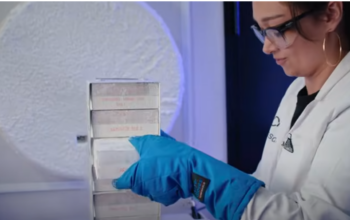
NASA’s Kepler Space Telescope has discovered tons of KOOL stuff in our galaxy. Astronomers have studied Stars, planets, exoplanets, and much more. One of the stars, KIC 8462852, has been acting unusual with unexplained dips in brightness. KIC 8462852 is an F-type star and approximately 1.5 times the size of our sun.
Most stars have time of slightly dimming. One percent is a normal amount of dimming while orbiting planets temporarily lessens our view. But KIC 8462852 has dips up to 22 percent. Kepler has tracked KIC 8462852 for four years. The lowered amount light happens occasionally but not on a predictable basis.
Astronomers have examined several possible reasons for the high level of light loss. They examined if some kind of circumstellar disk of dust may cause a problem but ruled it out with the infrared signal. Could it be debris from a huge planetary collision? NASA’s Wide-field Infrared Survey Explorer (WISE) and Kepler missions have both been watching KIC 8462852 and found no evidence of a planetary collision. It could be an issue of a comets passing in way but this is unlikely to continue to happen even with another star pulling the comets close.
Some astronomers are considering the option of intelligent aliens causing the this star to appear dimmer. These possible aliens could put a structure around their star to draw energy. This could be similar to Freeman Dyson’s theoretical energy absorbing structure. Dyson’s theory was adapted to idea of a Dyson Sphere, a gigantic sphere that completely encloses a star.
Astronomer Jason Wright of Penn State University stated “Aliens should always be the very last hypothesis you consider, but this looked like something you would expect an alien civilization to build.” (Discovery.com)
Astronomers have check “waste heat” coming from a structure like this. They have not detected any from KIC 8462852. They will point a radio antenna at KIC 8462852 to detect any radio signals from intelligent life.
At this time, astronomers have no evidence why the light dims with KIC 8462852. They haven’t given up looking for an explanation no matter how wild it might be.
(via Discovery.com, Slate.com)
Stay Geeky My Friends!



